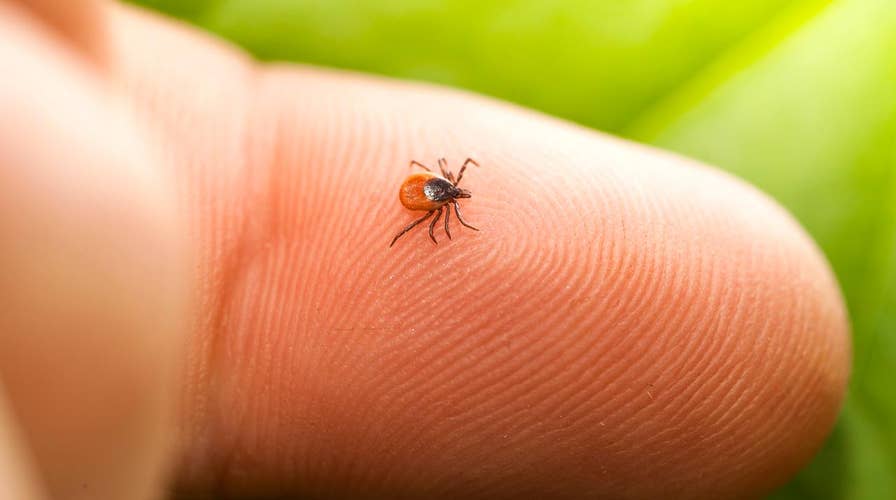What is Powassan disease?
A rare and life-threatening tick-borne virus is worrying doctors. What is Powassan disease and how can you keep yourself safe?
A surge in an aggressive type of tick that triggers a meat allergy in humans has health officials on alert. While the tick is most commonly found in the southeastern and south central areas of the U.S., data has tracked its movements as far north as Duluth, Minnesota, and Hanover, New Hampshire.
The lone star tick, which is named for the white dot found on adult females and can be as small as a poppy seed, triggers an allergy to alpha-gal in victims, leaving patients unable to consume meat. Wired reports at least 100 cases have been reported in the eastern tip of New York’s Long Island.
DRUG RESIDUE FOUND IN SANDERSON FARMS '100% NATURAL' CHICKEN PRODUCT, COMPLAINT CLAIMS
“We have three ticks here,” Rebecca Young, a nurse who assists at the Tick-Borne Disease Resource Center at Southampton Hospital in New York, told Fox News. “The dog tick, the deer tick, and now there’s a huge surge in the lone star tick in the last six to seven years.
While the lone star tick is not thought to transmit Lyme disease, a bite can result in itchy hives, stomach cramps, breathing problems and even death.
“You have to be aware you’ve been bitten,” Young said. “If you eat meat and you notice a rash and shallow breathing then you can deduce that you have this allergy.”
OKLAHOMA DOCTOR CHARGED IN OPIOID DEATHS OF 5 PATIENTS
Part of Young’s role at the hospital is helping people understand how to properly remove a tick, and to identify what type of tick it is. The lone star tick is able to transmit the allergy at all stages of its lifespan, causing health officials to urge people who spend time outdoors to be vigilant.
“Mosquitos are better when it comes to letting you know that you’re being bitten,” Dr. Scott Campbell, of the Suffolk County Health Department, told My Long Island TV. “Ticks are a little more stealthier. What they do is they quest. They actually will sit on vegetation and put their front legs out and wait for something to come by and they latch on.”
To avoid tick bites while outdoors, the Centers for Disease Control and Prevention (CDC), advises using repellent that contains 20 percent or more of DEET, picaridin or IR3535, and to walk in the center of trails.





















